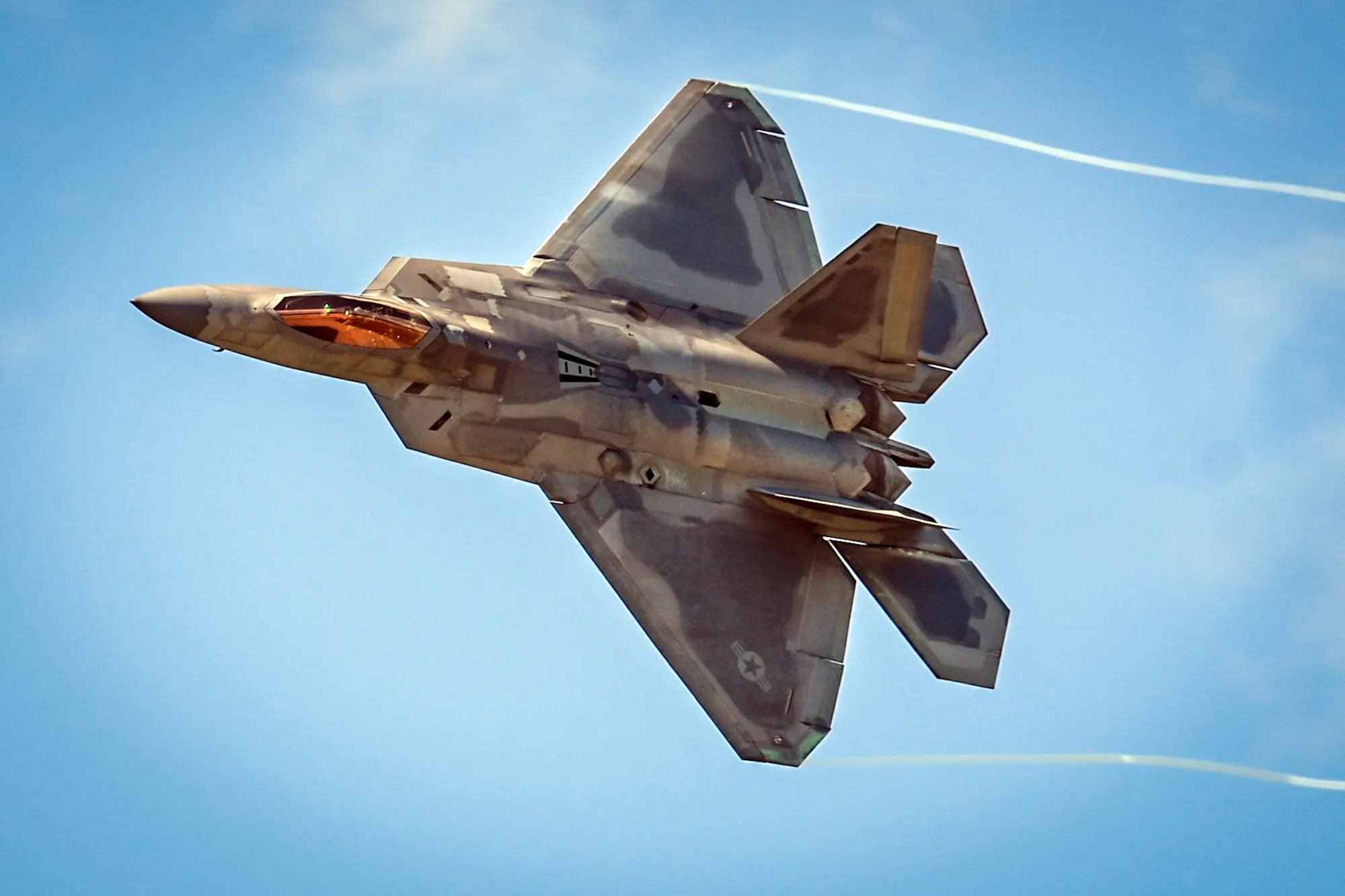
F-22 Raptors Fleet Strength: Current Status and Strategic
The F-22 Raptor remains a foundation of U.S. air dominance, eminent for its stealth, deftness, and advanced flying. As one of the most advanced fifth-generation warrior planes in the world, the F-22 plays a basic part in keeping up the United States’ strategic edge in airborne combat. Understanding the F-22 Raptors fleet strength is crucial to surveying the U.S. Discuss the Force’s capability in cutting-edge fighting and key deterrence.
Overview of the F-22 Raptor
Developed by Lockheed Martin and beginningin 2005, the F-22 Raptor combines speed, stealth, and predominant maneuverability. This fifth-generation warrior fly was planned to supplant more seasoned, widely discussed prevalence warriors such as the F-15, giving unmatched execution in both hostile and cautious operations. Prepared with advanced radar-evading innovation, coordinated sensors, and exact weaponry, the F-22 is optimized for discussing dominance missions and fast reaction scenarios.
The aircraft’s advanced aeronautics permit pilots to track different targets at the same time, whereas its thrust-vectoring motors empower predominant maneuverability unmatched by any modern warrior. These capabilities make the F-22 a constraint multiplier, competent of forming the discussed front line; some recent enemies indeed identified its presence.
Current Armada Quality of the F-22 Raptors
As of 2025, the F-22 Raptors fleet strength comprises generally 180 operational aircraft. Whereas the unique generation run was restricted to 187 units due to budget imperatives and tall generation costs, steady loss and updates have molded the current armada numbers. In spite of being fewer in number compared to more seasoned warriors, the innovative predominance of the F-22 guarantees that each flying machine can beat a few older-generation planes in combat scenarios.
Operational squadrons are essentially based at Tyndall Discuss Drive Base, Florida, and Joint Base Langley-Eustis, Virginia, along with select units positioned abroad for key arrangements. Customary support, updates, and preparing works out guarantee that these flying machines keep up their crest status, with a tall combat accessibility rate that underlines the fleet’s operational efficiency.
Technological Edge of the F-22
One of the key reasons the F-22 Raptor keeps up its dominance is its consolidation of cutting-edge innovation. Its stealth plan minimizes radar cross-section, empowering the airplane to enter challenged airspace undetected. The coordinates sensor suite permits consistent data sharing with other flying machines and ground control, guaranteeing prevalent situational awareness.
Additionally, the F-22’s supercruise capability permits it to fly at supersonic speeds without locking in afterburners, diminishing fuel utilization and keeping up stealth. This mechanical edge specifically impacts armada viability, as fewer airships can accomplish more in combat operations, improving the vital effect of the U.S. Discus Force’s warrior fleet.
Strategic Part and Deployment
The F-22 Raptors fleet strength is not, as it were, approximately numbers but rather around key arrangements. These airships are central to the U.S. discussion of defense, competent in neutralizing high-value dangers such as advanced adversary warriors, and coordinate discussion of defense frameworks. With the expanding emphasis on quick reaction and worldwide versatility, the F-22’s capacity to work in assorted situations guarantees that the U.S. can keep up discussion prevalence in both territorial clashes and large-scale operations.
Deployment methodologies regularly include matching F-22s with other warrior and bolster flying machines to make a multi-layered combat constraint. This approach leverages the Raptor’s stealth and combat capabilities while guaranteeing coordination with broader military operations. The key suggestions of such an arrangement fortify the fleet’s significance past insignificant numbers.
Challenges and Limitations
Despite its unmatched capabilities, the F-22 armada faces a few challenges. Tall operational and support costs make each airship costly to keep up. The maturing armada requires ceaseless overhauls to aeronautics, radar frameworks, and weapon integration to remain ahead of developing dangers. Additionally, the constrained generation number implies that the U.S. depends on a generally small armada to fulfill numerous operational commitments globally.
Nevertheless, headway in upkeep phones, prescient analytics, and pilot preparation has relieved a few of these challenges, guaranteeing that the F-22 remains a powerful drive indeed in the confrontation of cutting-edge threats.
Comparative Point of View: F-22 vs. Other Warrior Jets
When compared to fourth-generation warriors like the F-15 and F-16, the F-22 offers unmatched stealth, maneuverability, and sensor combination. Not at all like more seasoned warriors, which may require numerical predominance to accomplish comparative strategic results, the F-22 can rule airspace with less airship due to its mechanical edge.
This comparison highlights the vital importance of keeping up a modernized armada of advanced warrior planes. The F-22 Raptors fleet strength may appear constrained in numbers, but each jet’s capabilities guarantee overpowering viability against potential adversaries.
Future of the F-22 Fleet
Looking ahead, the F-22 Raptor will proceed to play a significant part in U.S. combat methodology. Plans for modernization incorporate strides made in radar, overhauled electronic fighting frameworks, and improved weapons integration. These overhauls guarantee that the armada remains operationally significant in spite of developing dangers and advancing discussion of combat dynamics.
Additionally, the cooperative energy between the F-22 and the up-and-coming F-35 Lightning II warrior will permit the U.S. to discuss the drive to keep up dominance through complementary capabilities. Whereas the F-22 exceeds expectations in discussing prevalence, the F-35 gives flexibility in multi-role operations, shaping a cohesive warrior procedure for decades to come.
Read More:- AMRAAM Missiles Are Transforming 21st Century Air Combat
Conclusion
The F-22 Raptors fleet strength speaks to more than a fair tally of operational flying machines; it symbolizes U.S. discourse predominance, innovative headway, and vital discouragement. With generally 180 profoundly progressed planes in benefit, the F-22 remains unmatched in stealth, maneuverability, and strategic capability. In spite of challenges in support and generation limits, the Raptor armada proceeded to shape present-day airborne fighting, guaranteeing the U.S. keeps up an overwhelming position in the skies.
In a time of quick military development, the F-22 armada underscores the significance of quality over quantity. Its vital sending, innovative predominance, and versatility make it a foundation of the U.S. Discuss Drive, securing airspace dominance and fortifying worldwide military quality.
 The Defence Blog
The Defence Blog